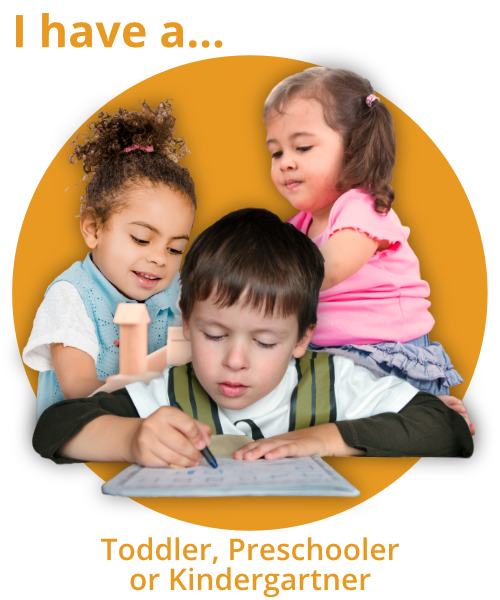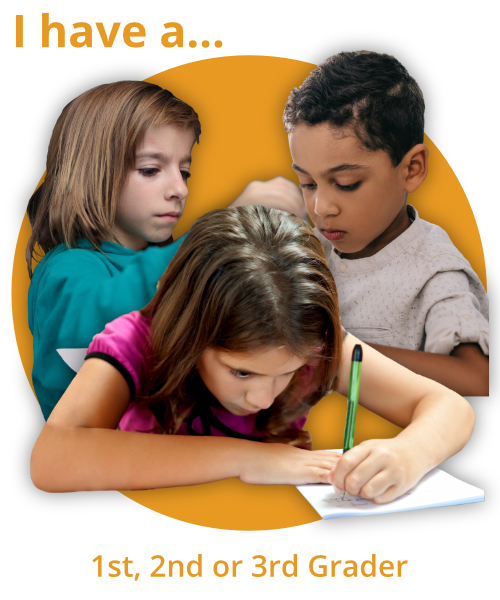States of Matter: An Experiment for Every Age and Stage
There’s such an emphasis on STE(A)M education these days, and sometimes it can feel like you’re falling a bit behind on introducing those science concepts. You might be surprised to discover how many of them you cover naturally in the course of a given day—even with the youngest children! If you’re looking for some inspiration on continuing those discoveries, this easy-peasy science exploration can be scaled for play and experimentation at any age.
Today, we're exploring science with a look at states of matter!
I'm Aubrey Hargis, Montessorian and mom of two. We don't live in one of those typical white minimalist Montessori homes that you might have seen on social media. I mean, I think they're lovely, but our life is a lot messier than that. Shelves and baskets come and go and are rotated around the house as needed. Toys get scattered, muddy footprints are often in the kitchen, and science (and cooking!) experiments, especially the messy kind, are an everyday affair. I love my messy, imperfect Montessori life...because education is a journey we take with our children, and the opportunities for learning start over every day.
Hey, Sweet Friend (1:25)
Our topic for today is a classic Montessori experiment that we share with children at a variety of ages. This episode is going to be very actionable! I'm going to send you off with some inspiration to work with your child in different ways, and I hope that you take the challenge, and do some of these experiments at home!
But first, if you’re new to Montessori Homeschooling, and looking for feedback on which materials to DIY or buy, check out this printable checklist!
Meet Challayne (3:23)
Today I'm spotlighting Challayne, a member of Constellation, our membership group for Montessori homeschooling mamas, an HSR Primary Alumna, and a current participant in our HSR Lower Elementary Pilot course. You can read more about Challayne here!
Let’s Experiment: Solid, Liquid, Gas! (12:45)
I want to preface by saying that by toddlerhood, your child probably already has some awareness of the properties of matter, so we can explore this concept in multiple ways throughout early childhood and into elementary. This isn’t just a one-time possibility for exploration!
Toddlers & Early Primary -- Ages 2-3.5 years (13:14)
I would recommend introducing some words in your daily life as you experience the world: freeze, melt, solidify. Also some describing words for the solids: hard or soft or squishy. You can name different types of liquids, too. You can talk about water, or milk, or juice.
Give your child the opportunity to experience the sensorial aspect of temperature related to solids. You might feel something that's metal, and then feel something that's plastic and note, the metal object feels colder than the plastic does! You can also discuss the many different types of solids that you might be able to touch and experience: wood, metal, plastic, etc.
You can talk about gas in terms of the air that we breathe. You can hold your hand up to your mouth and below out onto your hand, and let your child experience how that feels. You could blow on your child (if your child likes that!) and giggle about it and talk about how you are blowing your air onto your child's body. You might see smoke from the fireplace or a candle and talk about the smoke in the air. You also offer language connected to those actions: breathing, burning, etc.
The important thing to remember when working with toddlers with an experiment like this is that you are mainly modeling for your child. You are doing, and they're watching, they're touching, and experiencing the senses. These are experiences you want them to be able to touch and know--so a candle might not be something that you want to bring out at this moment, you might just want to talk about the air and steam or similar. Safety is your first priority!
Older Primary -- Ages 3.5 - 6 years (16:45)
These children can perform simple experiments--but rather than starting by emphasizing the scientific method, you’re going to allow for exploration. There is no need to be prescriptive about science or about experiments, other than modeling for your children what they might experiment with, and then letting them take the lead to do the actual experimenting. Afterwards, you can talk about what they observed.
With this age group, it's actually much more important that you are using those science vocabulary terms you introduced in the toddler years, and that you are providing immediate hands-on action/reaction activities. Activities that take a long time are fine and worthy as well, but what is more appealing to children at this age is something that they can actually do, experience, and observe right in the moment. For example: sink and float activities to explore the properties of water, watching popsicles as they melt in your mouth and drip, flying a paper airplane across to see how fast it will go. When that quick activity is actually over, your child at this age may just walk away and move on to other things! While sometimes they may want to repeat the activity, they often prefer that the activity is one that they can just do in the moment.
Children of this age like to sort, so you might just gather your solids and your liquids and just talk about the different ones, comparing and contrasting and letting them classify. They can watch ice melt in a pan and then turn it into steam! They can't do most experiments completely independently, but you can find ways to offer independent exploration, and then do main activities together. They don’t need to connect the experiment to grander theories about the universe, they just like to do the experiment, observe and enjoy, and then maybe repeat it.
Lower Elementary -- Ages 6 - 9 years (20:44)
These children are more intentional with experiments and are more prepared to dive into the scientific method. You don't have to write it all out every time; sometimes that is burdensome on the child who doesn't feel super comfortable writing yet. The process of forming a hypothesis and documenting results, this is perfect for the elementary age. They really like to connect the experiment to a deeper study of abstract things.
For example, when we do the solid liquid gas experiment with this age group, we connect that to the concept of maybe the outer parts of the earth: the lithosphere, the cross and the part of the mantle, the hydrosphere, the oceans and the water vapor, the atmosphere, the air and the gaseous nature of the outside part of the earth. You can relate it to the formation of the earth, where we talk about how when the earth was very, very young, it was covered with volcanoes that released hot gas and ash. Slowly, as the earth cooled, those first drops came down and eventually pooled to form our oceans.
This is part of the very first great lesson in Lower Elementary!!! You come back to it again and again throughout that three year period in different ways. It connects perfectly to experiments about solid, liquid and gas.
At this age, your child really can perform experiments mostly independently with a little supervision. Rather than modeling, you can give instructions verbally or on paper, and then just let them go at it as long as they are being safe.
You Can Do It! (22:57)
I want to encourage you to explore these states of matter with your child at home. No matter what age your child is at, you can do this experiment. Your child will learn more about the earth AND about themselves. I mean, blood is a liquid, we are solid beings, you can feel our skin is solid. snot is viscous, right? There's just so much to talk about with children of any single age.
If you do this experiment, definitely post it and tag me on Instagram, because I want to see how it goes!
Gratitude (24:03)
Today, in gratitude, I share Sarah Pirtle’s Two Hands Hold the Earth, which I learned in my own school days as an Elementary child.


